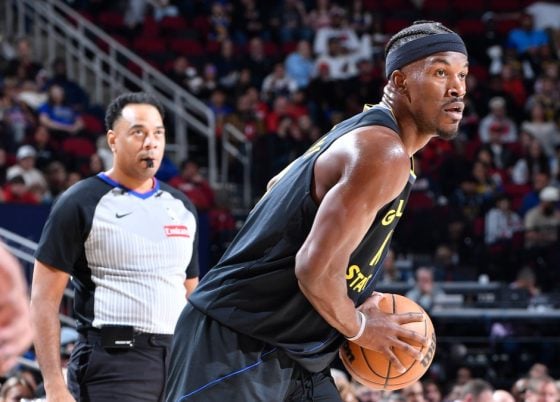For the second time this season, the Boston Celtics faced the Milwaukee Bucks. After an initial game against the not-so-scary Bucks at home, the Celtics traveled to Wisconsin, home of Sam Hauser’s family. After 48 minutes of basketball and a significant comeback, here’s what we learned.
Two consecutive 16-2 runs to start games
For the second time in a row, the Celtics were beaten badly in the first few minutes of the game. You might wonder if this is becoming a trend or simply bad luck. As usual, it’s likely a bit of both.
The Celtics’ early-game offense was shortsighted, with most shots being contested threes after just one pass. They wanted to push an early offense but didn’t create the best opportunities. The paint was hard to penetrate with Brook Lopez and Giannis Antetokounmpo guarding it, so the Celtics stayed around the perimeter.
This led to two problems: poor offense due to bad shot selection and increased transition opportunities for the Bucks. This brings us to the defensive end—how did the Celtics give up 16 points in less than three minutes? Once again, we see a problem with variance.
While the Celtics missed contested threes, the Bucks made theirs. Giannis hit his first three of the season, Taurean Prince was on fire, and there wasn’t much more the Celtics could do to stop Milwaukee’s red-hot start.
Jaylen’s offensive creation
To get the Celtics’ offense on track, Jaylen stepped up when needed. With the paint crowded, his mid-range game provided much-needed variety. The mid-range is a useful tool to counter Lopez’s deep drop coverage and aging legs.
Jaylen also used his strength to attack mismatches and create chaos. This doesn’t always show up as assists in the box score, but his ability to draw defensive attention on post-ups and drives opened up space for others.
While the box score might suggest that the Jays had an off game, don’t let it fool you. The Bucks’ defensive liabilities made them vulnerable to the Celtics’ mismatch-hunting.
First-half defense: 404 not found
While the offense began to click after a shaky start, the defense struggled. In the first half, the Bucks posted a 132 offensive rating, largely due to the Celtics’ lackluster defense.
Transition defense has been an issue for the Celtics, as Mike Shearer pointed out. Shot selection, the double-big lineup, and an aggressive offensive rebounding strategy have all contributed to this problem.
The defensive issues were also evident in the number of backdoor cuts the Celtics allowed. This stemmed from a lack of focus and communication, allowing easy looks for Milwaukee.
Dame Lillard drew easy fouls in semi-transition, and Giannis had clear one-on-one opportunities with no help defenders in sight.
Strategic defensive adjustments to force Andre Jackson Jr. out
Joe Mazzulla and his coaching staff again showed their prowess. While the Celtics’ offense struggled, they turned to a double-big lineup to bolster rim protection against Giannis and Lillard.
Neemias Queta was brought in, assigned to defend Andre Jackson Jr., but with a twist—Queta acted as a paint protector, allowing Jackson Jr. to roam around the three-point line. Jackson was instrumental in disrupting Tatum’s and Jaylen’s creation, so forcing him off the floor due to his limited offense was crucial.
He played less than five minutes in the second half, leading the Bucks to give minutes to AJ Green—a better shooter but a defensive liability.
The “communicating vases” effect
As French analyst Guillaume calls it, “communicating vases” were at work. The Celtics’ defensive adjustments forced Milwaukee to adjust their offense, which in turn weakened the Bucks’ defense, helping Boston’s offense.
:no_upscale()/cdn.vox-cdn.com/uploads/chorus_asset/file/25725737/Jayson_Tatum_hunting_AJ_Green.png)
This is the beauty of basketball: adding a second big man to protect the paint not only strengthens your defense, but can also enhance your offense.
Payton Pritchard: elite shooter, developing passer
Payton Pritchard’s shooting display was a sight to behold. In the first half, he scored 17 of the Celtics’ 58 points. His hot hand, combined with off-ball movement and deep-range shooting, kept the Celtics within reach.
However, his game has limitations, primarily in playmaking. Pritchard can drive and kick to the strong side but struggles to pass over or around defenders due to his size.
This restricts his ability to create for others, explaining why he’s rarely seen as a primary creator.
Great defense fuels great offense
From the start of the second half, the Celtics reminded us why they’re an elite defensive team. After allowing a 132 offensive rating in the first half, they held the Bucks to just an 83 offensive rating in the second.
Improved rotations forced Milwaukee into difficult shots and turnovers.
Over the final 24 minutes, the Celtics forced turnovers on 20% of Milwaukee’s possessions—one in every five! Jrue Holiday’s defensive expertise was crucial in stifling the Bucks’ offense.
Jayson Tatum’s off-ball impact
Jayson Tatum’s versatility allows him to elevate the Celtics’ offense in various ways. He can drive, pull up, and deliver pinpoint passes to open teammates. However, his off-ball game is equally impressive—he reads defenses well and is a constant threat.
As a screener, Tatum has become even more effective with added muscle. He can roll hard to the basket, play the short-roll or pick-and-pop for open shots, further diversifying the Celtics’ offense.
The Celtics have a superstar, who can defend whomever he needs too, create others, or play off-ball to better optimize the team offense. A player who can remain outside of the action until the defense made a mistake and punish with a 3 points catch-&-shoot on the wing, and increase the team lead when it was needed.
Hunting Lillard in the clutch
In the closing minutes, the Celtics focused on exploiting Lillard’s defensive weaknesses. When he switched onto Tatum or Jaylen, they attacked immediately.
Lillard’s presence boosted Boston’s offensive rating to 123, up from their average of 115—likely due to Lillard’s defensive shortcomings.
Winning without the rim
Typically, the Celtics excel at finishing around the rim, thanks to their spacing. However, against Milwaukee, they managed only 17 rim attempts, converting just 53% of them. So, how did they manage an effective offense?
:no_upscale()/cdn.vox-cdn.com/uploads/chorus_asset/file/25725752/BOS___MIL___Rim_Frequency___Efficiency__Cleaningtheglass.com_.png)
First, they shot 49 threes at a 39% clip. But just as crucially, they drew fouls and earned a 28% free-throw rate, compensating for their poor rim numbers. The ability to generate points from the line offset the team’s struggles near the basket.
Once again, the Celtics showed their adaptability—they can find ways to win, even when their usual strengths are neutralized.






